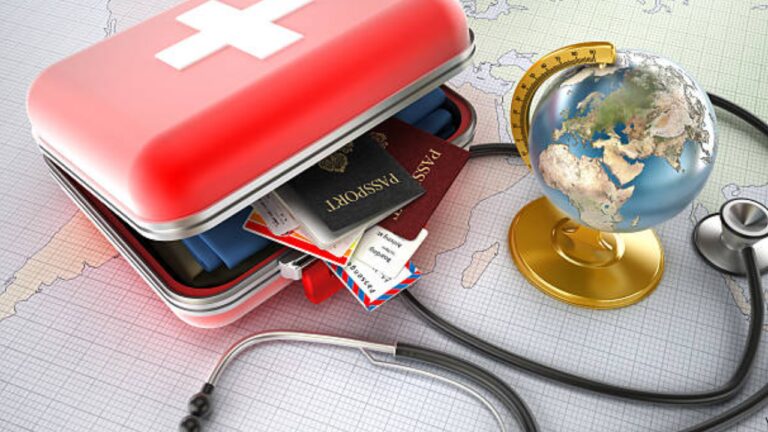In recent years, India has been playing a leading role in the global field of medical tourism. India’s emergence as a top medical tourism destination is due to a confluence of factors including visionary leadership within the industry, supportive government policies, talented workforce, state-of-the-art facilities and a global trend towards cost-effective and quality healthcare. Innovative practices, high level of personal care and significant cost savings have helped India rank among the top 10 medical tourism destinations in the world.
Data from the Ministry of Tourism (2023) reveals that majority of visitors from West Asia (22.7%) visited India for medical purposes. This was followed by visitors from Africa at 21.2% and South Asia at 19.8%. Despite the challenges posed by the COVID-19 pandemic, the Indian medical tourism market has shown resilience, achieving an estimated value of US$ 7.69 billion in 2024. Future projections promise impressive growth as it is projected to reach US$ 14.31 billion by 2029, as reported in the Mordor Intelligence report on the Indian medical tourism market.
Affordable and quality healthcareThe key answer to the question “Why India?” is affordability without sacrificing quality. With medical procedures costing significantly less than in the Western countries (often 60%-90% less), India makes advanced medical treatment accessible to customers from all over the world. Low cost treatment available at reputed hospitals coupled with short waiting times play a compelling role in the decision making.
Apart from being affordable, a wide range of advanced medical procedures are available in India. They have expertise in a wide range of fields, from cardiac and orthopedic surgery to dental and eye surgery and organ transplants. These diverse medical services cater to a variety of medical needs. According to the Medical Tourism Association’s 2021 report, cardiac surgery, including transplants, holds a leading position due to India’s reputation and advanced facilities. In fact, media outlets such as Medical Tourism Magazine have listed India at number four among the top countries in the world that offer the best treatment for cardiac care. The country offers a cost-effective alternative for high-quality cardiac care due to its skilled surgeons, modern hospitals, and growing reputation for successful complex cardiac procedures. It is followed by orthopedic surgery, cosmetic surgery, dental care, and oncology, all of which are areas in which India is known for its expertise.
Government Driven – Healing Initiative in India
As part of its larger efforts to promote medical value travel in India, the Government of India has launched the “Heal in India” campaign in 2022 and to further boost the industry, a one-stop information website for patients to access and navigate their medical journey safely and securely. There are over 1,600 NABH-accredited hospitals and over 165 countries in the approved list for e-medical visa. The Government of India also announced the Ayush Visa for those seeking specialised traditional medicine in 2021, granting the medical tourism sector a “champion” status. As a result, in 2022, the Government of India issued over 650,000 medical visas to overseas patients.
India’s healthcare industry is currently globally competitive, with top class infrastructure, state-of-the-art technology and a large pool of specialist doctors and nurses. India is home to the largest pool of medical professionals in South Asia, many of whom are globally renowned in their fields. India’s prowess in specialties such as organ transplantation, cardiology and oncology has put India in the spotlight as a fast-growing hub for medical value travel.
Many hospitals in India are accredited by international organizations such as JCI, NABH and ACHSI, demonstrating the country’s commitment to maintaining high standards of healthcare. This assurance gives patients peace of mind in the quality of care they receive.
Providing a seamless experience for international patients is paramount. With many healthcare facilities offering multilingual support and English being one of the official languages, India caters to patients from all over the world. Additionally, improved transport infrastructure and simplified visa policies have increased convenience for patients travelling from abroad.
Governments and medical professionals catering to customers around the world would be worthy of interest in why these souls seek out strange lands for treatment. According to the MTA’s 2024 report, “Unravelling Medical Tourism: Why Patients Travel and What Stops Them,” 97% of patients choose a hospital (and country) on the trust factor, followed by accreditation or quality assurance, and 70% of patients say they are willing to travel for medical purposes, with access to the highest quality post-operative care being the top reason for traveling.
(Author: Dr Nitish Shetty, CEO, Aster DM Healthcare India)

